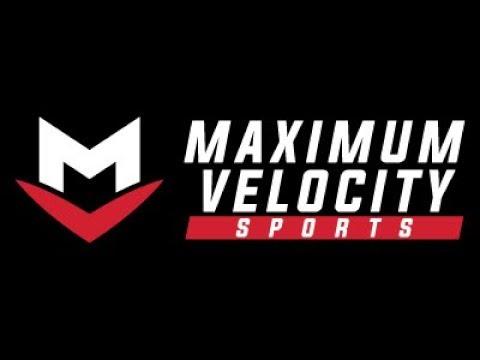The task of any sport manager is to develop their sport at both ends of the spectrum, at the grass roots level and at the high performance level. This is true at any level of sports management. A sport manager at the club level must ensure their is sufficient recruitment of participants, provide programs that enable participants to flourish, and prepare outstanding participants for representation at the next level up. A sport manager at the national level will be concerned with the total participation nationally in the sport, the pathways that may assist those participants that have talent and ambition to rise up, and the opportunities that are provided to the highest echelon of participants to compete in the international arena.
In some respect therefore, key sport development strategies are common to both ends of the spectrum are:
- Education of coaches
- Provision and improvement of sport facilities
- Recruitment of participants (including Community Outreach and Talent Identification Programs)
- Organization of events
- Nurturing of volunteerism (including Referees, Coaches, Administrators and Other Helpers)
- Openness in political and administrative structure
- Knowledge management
- Development of self-funding programs
- Athlete development programs
- Forming partnerships with other sports and organisations
Education of Coaches
The reality for the overwhelming majority of coaches is that they have no expectation or desire to be anything other than a coach at the grass roots level. Happiness is simply keeping a team together and avoiding the wooden spoon. For such individuals, the coach education system provides a nominal level of information that focuses on safety and ethical coaching practice. Coaches at the grass roots level are often reluctant to pay out of their own pockets the price of ongoing education.
For coaches that do wish to go further than grass roots, the need for education is ongoing. It takes many years, a decade perhaps, before sufficient expertise is acquired to be recognised as a leading coach at the grass roots level. For these individuals, the coach education system often does not serve them well. Success as a coach occurs despite the coach education system rather than because of it. Coaches wanting to move up the sport development system will generally implement a variety of additional measures to gain knowledge and expertise. These measures might include:
- Self-study including the purchase of print and video materials
- Working with a mentor coach
- Nominating themselves to coach representative teams
Provision and Improvement of Sport Facilities
Participation in sport is all about enjoyment and the quality of the environment is all important. The critically important aspect of facilities, irrespective of indoor or outdoor, are:
- Quality of the playing surface
- Lighting / floodlighting
The playing surface needs not only to be safe but also to inspire the player to better standards of performance. For the football (soccer) player, it is an exhilarating feeling to walk out onto a beautiful grass pitch. The ball travels smoothly across the surface without unexpected bumps and deviations and increases the confidence of the player. For the indoor player, a good playing surface is one that is non-slip and line markings are in good condition and do not cause trips and falls. Furthermore the immediate surrounds of the playing surface must be free of obstacles to prevent accidental collisions.
Good lighting is also essential whether indoor or outdoor. Gloomy lighting is dangerous and leads to players seeing the ball too late or not all.
For indoor sports, another critically important aspect of facilities is air conditioning and/or air ventilation. This is also a safety factor as well as enabling players to play longer and harder.
In addition to these aspects, quality sport facilities include:
- Social areas with food servery and/or drinks bar
- Clean and tidy changing areas with lockers
- Spectator seating with protection from sun and rain
- Shop for equipment purchase, hire and/or repair
- Car parking
Recruitment of participants
Recruitment is a very big issue in sport. At the club level, falling participation levels can spell the demise of a club. Falling participation levels mean reduced income for the club, loss of status in the community and an inability to maintain programs, events and facilities.
At the national level, the amount of government funding may be tied to the level of participation and the success of participation development initiatives. If a sport has low participation levels and demonstrates an incapacity to increase number of participants, it may lose government funding as a result.
For these reasons, sport administrators invest much time and energy devising and implementing initiatives aimed at promoting the sport, programs and events, and the organisation itself to gain increased participation. It is never easy because it is a very competitive environment where all sport organisations are engaged in promotion to some extent.
Organisation of Events
The organisation of events is not only a primary task for all sport bodies but also a major aspect of sport development effort. Apart from the enjoyment that good events bring to participants and spectators, the organisation of special events also provides other benefits such as:
- Assisting the organisation / sport to gain publicity and promotion
- Providing an opportunity for sponsorship
- Upskilling all persons involved in the planning and conduct of the event
- Providing an impetus for organisations to make improvements to facilities and equipment
- Raising the performance standards of home club / organisation
Nurturing of Volunteerism
The sport industry depends to a very great extent on the work input of volunteers who coach, officiate at competitions and work on management committees of clubs. In recent times, some concerns have been voiced about the impact of modern life on volunteers. Social change such as the 7 days a week shopping cycle, the increase of women in the workforce and a rise in average weekly work hours have put pressure on people to drop out of volunteering.
If a sport is flourish it must encourage and reward people to continue to provide voluntary service. This is a very perplexing issue that often seems to get the better of sport administrators.
Further information on volunteer recruitment strategies
Openness in Political and Administrative Structure
There are few issues that have a greater negative impact on an organisation than political in-fighting. When this occurs, much time and effort of key people in the organisation is unproductive in terms of sport development. This is true at any level of the sport spectrum.
Sometimes, however, political in-fighting is inevitable and unavoidable, and the sport/organisation simply has to go through this stage because:
- Administrators acquire an unhealthy level of power and begin to see other key contributing administrators as a threat to their position.
- Democratic processes within a sport organisation are subverted through changes to the constitution
- Administrators fail to observe due process of consultation often trusting their own judgment above the collective opinion of significant others.
Knowledge Management
The issue of knowledge management in sport organisations is under-appreciated. For an organisation to be successful it must capture knowledge from its experts and distribute it to others in its own jurisdiction. The organisations experts will include its leading coaches, administrators, curators and referees, and the channels of distribution will typically take the form of:
- Coaching and/or officiating manuals
- Policies and procedures (Further information and examples of policies)
- Websites that provide factual and historical information
- Strategic plans
Development of self-funding programs
The term "Self-funding" applies to organizations that have sufficient income streams to cover their normal operational costs and do not depend on funding from government. Some sports are able to derive very significant funds through sponsorship, TV rights, merchandising of clothing and equipment, and through the sheer number of participants. On the other hand, there are many sports (particularly Olympic Sports) that are heavily dependant on government funding to exist.
The ability of a sport/organisation, at any level, to be self-funding is highly respected by government. It means that a sport is not at risk of sudden and dramatic changes in funding levels that can result in the loss of key salaried staff, collapse of athlete development programs or the loss of key facilities.
Athlete development programs
Athlete development is, by its very nature, at the heart of what sport is about. Athlete development is not only about sport performance but also about developing social and ethical skills and preparing people for healthy and productive lives.
However, the usual understanding of the term "Athlete Development Program" is a program that has the objective to identify and develop people to high levels of sport performance. Thus an Athlete Development program might identify promising athletes at the club level and improve their capability to play at the state level, or identify athletes at the state level and prepare them for representation at the national level.
Athlete development is a critically important sport development strategy because it is part of the mission of sport organizations at every level to provide participants with opportunity. Every sports coach dreams of finding sports champions and every sport organization is always proud of the champions it produces. Therefore, it can be a major problem if a sport organization is perceived by the community as having a lack of capability in athlete development.
Key components of an athlete development program include:
-
Talent identification programs - not essential for the sport organization but certainly a commonly used tactic. Sports compete with each other to find and recruit people with high genetic potential. A typical Talent Identification Program involves the testing of children at skill for genetic attributes that may predispose a person towards success in sport such as:
- Height
- Endurance or sprinting capability
- Vertical jump
- Hand eye coordination
- Flexibility
- Other factors such as motivation
- Coaching clinics and camps - the organization of clinics and camps, particularly in school holidays, where participants receive special coaching and guidance from high ranking coaches. This also serves as a useful means for talent identification.
- Competition programs - providing participants with opportunities to compete with others of similar ability. Thus, by immersing athletes/players in a high standard of competition, their skills and tactical awareness will develop.
- Scholarship programs - Athlete Development Programs often include an element of funding provided to cover the cost of travel to major competitions and specialist equipment. In recent years national sport organizations provide funding to the highest ranked athletes to enable them to devote more time to training ( and less to work).
Forming partnerships with other sports and organizations
There are a number of benefits that be gained if sport organizations work together in cases where this is feasible. The most notable benefit is in the development of facilities. Even though the high cost of building facilities is often assisted with government funding programs, sport organizations generally need to outlay sums of money of the order of hundreds of thousands of dollars. Such funding commitment is often beyond the capacity of a single sport organization but achievable if 2 or 3 organizations work together.
Facilities can be developed for 'multi-use' and sports can obtain access without stepping on each other's toes to a great extent. Indoor facilities generally don't present too much of as problem as usage is matter of good programming. Outdoor facilities, especially where there is a reliance on grass, can be a problem as too much usage generally reduces the quality of the playing surface and this is a major obstacle to sport development. In the case of outdoor facilities, pitches may need to be dedicated to a particular sport but clubhouse, parking and other enmities can be shared.











